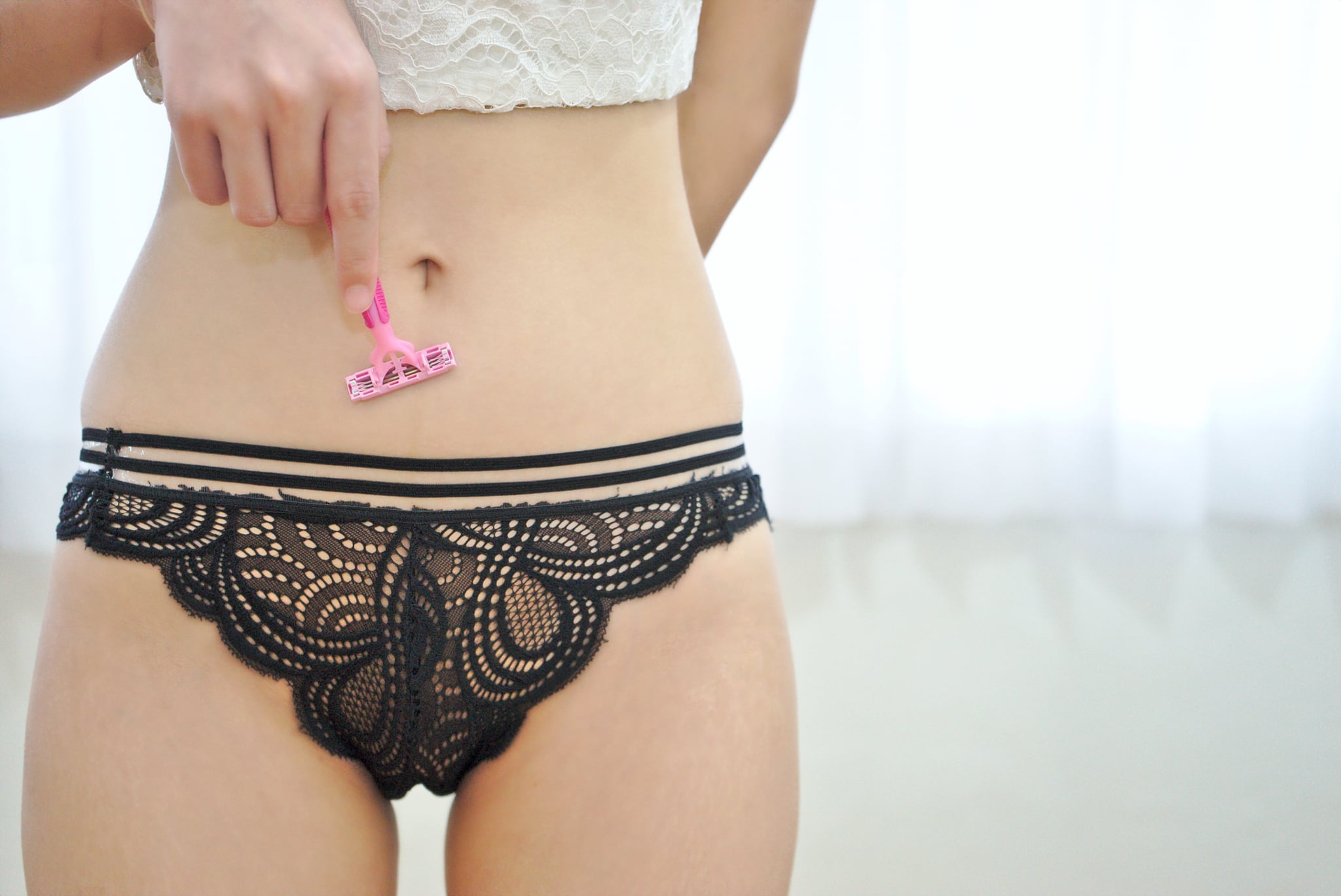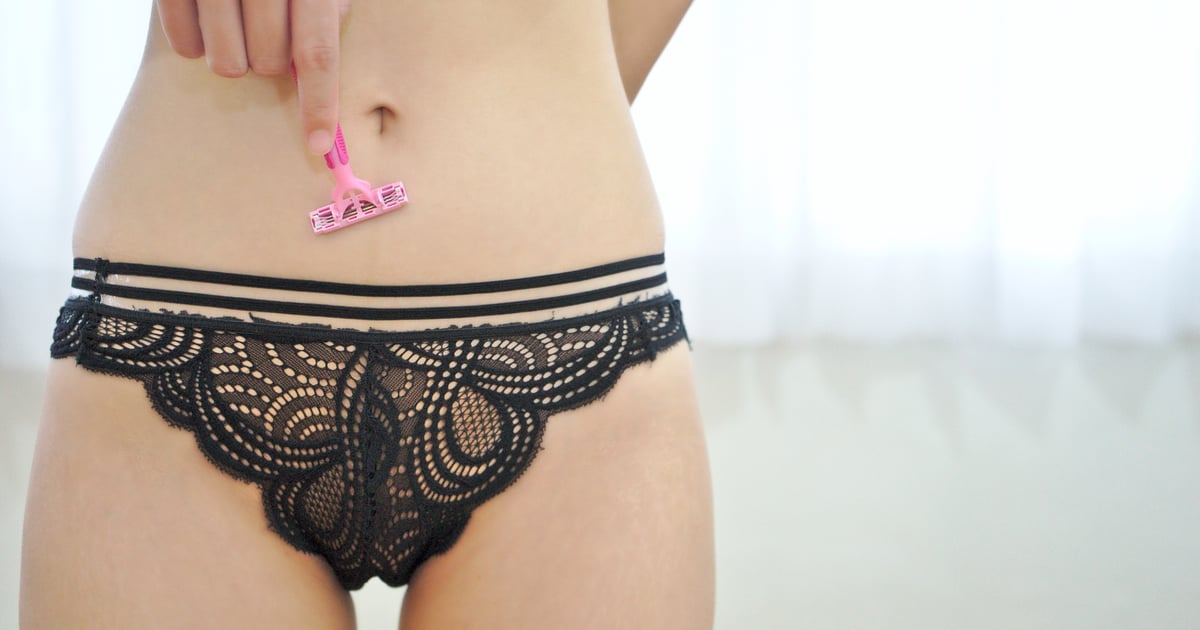
Image Source: Getty / Chaiwatt Chankasamsak / EyeEm
With the warmer months often comes an increased awareness of body hair. While not everyone is a fan of removing their own, if you are, your hair-removal routine may restart with a vengeance as turtlenecks and pants are swapped for t-shirts and shorts. If you are someone who likes to be completely hairless, there is one type of body hair that’s less widely understood (and that you might be wondering how to get rid of): vellus hair.
“Vellus hair is a fancy term for peach fuzz,” board-certified advanced aesthetics nurse practitioner and founder of Effacè Aesthetics, Roberta Moradfar, tells POPSUGAR. (It’s often referred to as the latter because it sometimes resembles the fuzz on the fruit.) “These are the fine, very light-pigmented hairs that can be found all over the body including the face, ears, and nose. On certain areas of the body, hormonal changes may turn vellus hairs to thick, coarse hairs – for example the pubic area and armpits.”
Yes: that means while you’re most likely to notice them on your cheeks, chin, or ears, you may also have vellus hairs on your stomach, arms, and feet. If removing your peach fuzz feels like a herculean task for you, we asked Moradfar and board-certified dermatologist Rachel Maiman, MD to explain everything you should know about vellus hair, including tips for proper removal.
What Is the Function of Vellus Hair?
Though this type of body hair is small, it actually serves an important purpose. “The primary role of vellus hair is thermoregulation, also known as the regulation of body temperature,” Dr. Maiman tells POPSUGAR. “Basically, the vellus hair functions like a wick for sweat. While a skin pore is open, as occurs when the body temperature rises, sweat wets a strand of vellus hair and the sweat located on the external part of the strand evaporates.”
These hairs also serve a more tactile function. “Alongside thermoregulation, vellus hairs produce the sensation of goosebumps,” Moradfar tells POPSUGAR. “This is what lets you know if there’s something crawling on your skin.”
What Causes Vellus Hairs to Grow?
Vellus hairs are actually hairs that you had as a child and are the starting point for the body hair that you may be more familiar with today. “Vellus hair replaces the characteristic hair noted in utero (called lanugo hair) on a human fetus at 36 to 40 weeks of gestation,” Dr. Maiman says. “At puberty, hormones cause much of the vellus hair to turn into terminal hair and stimulate the growth of new hair in the armpit and the pubic area. In some people, this change in vellus hair also occurs on the face, giving them a beard, and the body.”
It’s worth noting that while these hairs are generally harmless, an overproduction of vellus hairs may indicate a larger issue. “A change in overproduction of vellus hairs can signify disease,” Moradfar says. “Individuals with certain conditions such as anorexia may see an increase in the production of vellus hairs, and changes in adrenal glands can also cause an overproduction of vellus hairs as well, which is common with patients with Cushing’s syndrome.”
If you find yourself trying to get rid of vellus hairs more often, you may want to schedule a doctors appointment to make sure there are no underlying conditions of concern.
How to Identify Vellus Hair
https://www.instagram.com/p/CaEMcXArpQ0/
While vellus hairs can look different on everyone, there is a way to tell the difference between them and your fully developed body hair. “Vellus hairs are noticeably thinner and light in pigment,” Moradfar says. “During puberty, when the vellus hairs turn into terminal hairs, they turn darker, thicker, and longer, which is due to hormonal changes.”
Vellus hairs can develop all over your body — with the exception of the palms of your hands and the soles of your feet. However, you can also identify them by taking a look at areas that you would otherwise consider “hairless.” “Take a look at places like the earlobe and forehead, and you’ll actually see tiny hairs,” Dr. Maiman says. “These are vellus hairs, and you can see that the hair is translucent and unmistakably thinner than other hair on the body.”
How to Get Rid of Vellus Hairs
While you could always reach for hair removal creams as an option for removal, both Dr. Maiman and Moradfar suggest shaving or dermaplaning as your best solutions. If you’re willing to splurge, an expert-approved at-home device is the Dermaflash Luxe Dermaplaning Exfoliation & Peach Fuzz Removal Device ($200). Otherwise, our editors swear by the Venus Exfoliating Dermaplaning Razor ($19), which comes with two blade refills, as well as the Versed Skincare Instant Gratification ($20). Both are nonelectric options that feature a reusable, slip-free handle.
You have the option to get the professional treatment done by a dermatologist, but if you prefer to do it at home, Dr. Maiman broke down the process into easy-to-follow steps:
Now that you’ve unlocked a whole new level of hair removal, feel free to rock your slinkiest tank top and shortest shorts without reservation. You do, after all, have this hair-removal thing down pat.
Source: Read Full Article
